|
|
Post by Cei-U! on Dec 15, 2015 10:15:27 GMT -5
Up too late last night and gone too early this morning for a detailed entry so maybe it’s just as well that jez beat me to the punch in citing today’s cartoonist, the late great #10. Dave Stevens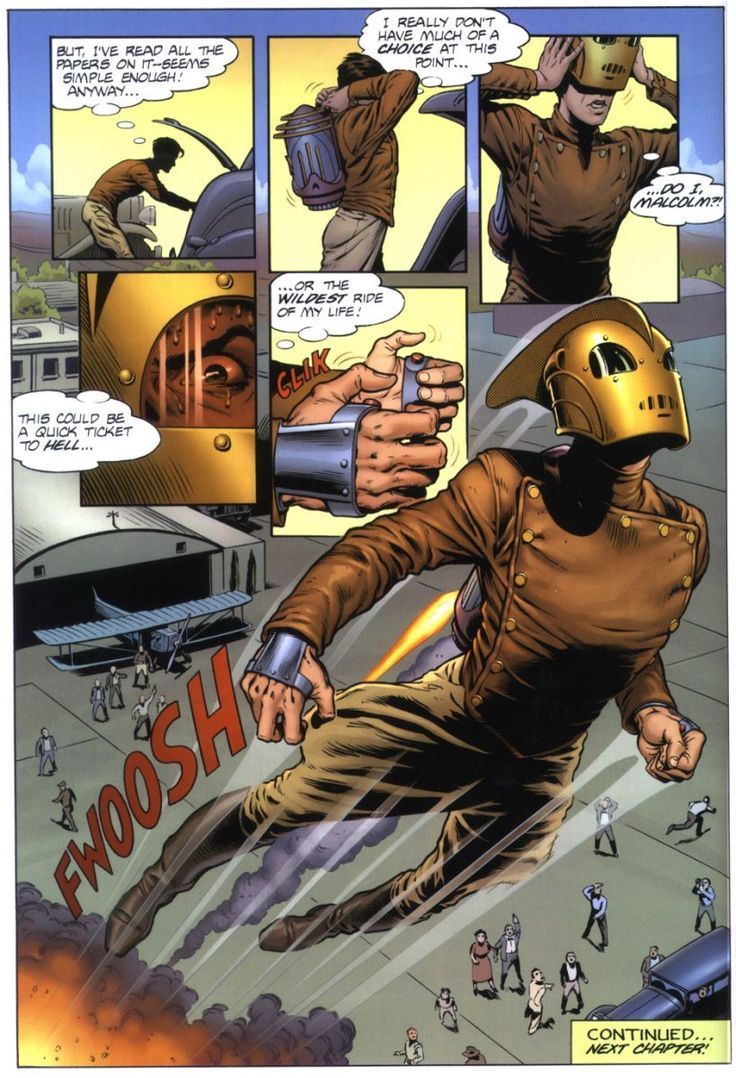 I’m a sucker for the illustrative look, that visually seductive combination of first-rate draftsmanship and lush finishes. From Alex Raymond and Ruben Moreira to Steve Rude and Gene Ha, I love it all. And few artists ever delivered that style with more panache than Stevens, whose work was consistently drop-dead gorgeous. I should add that Dave is one of two on my list of twelve that I’ve met in person. The twenty minutes we spent chatting about his artistic influences are among my fondest comics-related memories. He was a great guy and a helluva talent who burned bright and was gone too soon. Cei-U! I summon Betty Page's best friend! |
|
shaxper
CCF Site Custodian
Posts: 22,860
|
Post by shaxper on Dec 15, 2015 10:40:12 GMT -5
#10. George Perez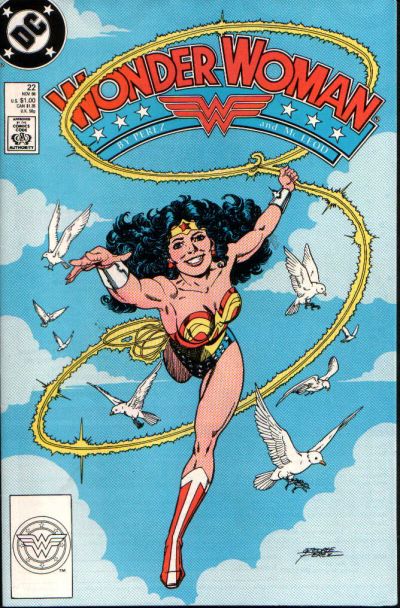 In addition to being a favorite artist of mine, Perez has the unique honor of being (so far as I know) the only comic book creator to ever single-handedly define a core American superhero. Superman, Batman, Spider-Man, Captain America and the like were all the products of creative teams, and even their most iconic iterations were the results of more than one contributor*, but Perez spent half a decade making one of the most iconic heroes in American Mythology entirely his own. Instead of depicting WW as just the girl of the group, or relying on easy tropes like being a strong but simplistic feminist, a femme fatale, or an aggressive and tough Amazon warrior, he gave Diana a rich and endearing complexity that truly stuck, and he reinforced it through both his writing and his artwork. The image above conveys it perfectly: though she is both strong and attractive, neither are emphasized -- instead what comes across is her idealism, naivete, courage, and joy. She is infinitely complex and real, never reducible to a stereotype, and Perez's writing and art worked together to give us this amazing spirit and personality. I'm not convinced anyone ever captured the character better, before or after. This is the definitive Wonder Woman, and Perez did it all on his own. * Yes, you could argue Frank Miller did this with Batman too, but he did it for all of four issues, not a full run, and I would argue his interpretation was heavily influenced by the work of creative teams that came before him.
|
|
Crimebuster
CCF Podcast Guru
Making comics!
Posts: 3,958 
|
Post by Crimebuster on Dec 15, 2015 11:01:06 GMT -5
10. Scott McCloud
Scott McCloud would deserve a spot on this list just for his work with Zot! if that's all he had ever done. But, of course, it isn't, because he also defined the art of comics for a generation. Understanding Comics is pretty much the seminal work on the art of comic books, in my opinion, and it's done in a fantastic style that I can't inagine anyone else successfully imitating, much less topping. Just about perfect.  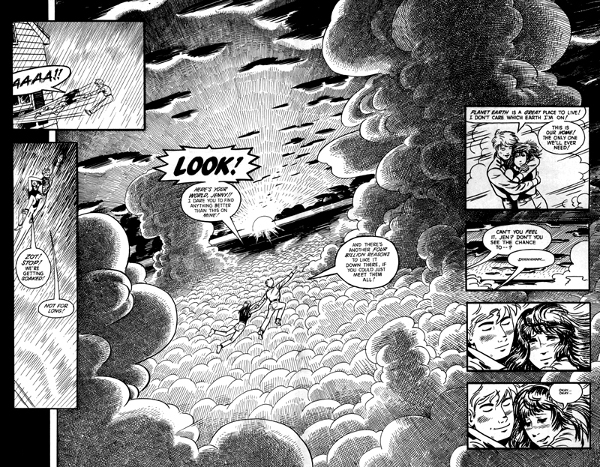
|
|
|
|
Post by Deleted on Dec 15, 2015 11:24:09 GMT -5
My first dip into the weirded out... #10...
Fred Hembeck

First came across his small but sweet gag strips in DCs published between 1979-81 in the Daily Planet page. When I don't feel to read an entire comic and just want a quick fix with something goofy and off the wall, guys like Fred work just fine. The first of 2 'quick fix' submissions in my list. |
|
|
|
Post by Deleted on Dec 15, 2015 11:32:23 GMT -5
#10 Gary Larson Far SideMy favorite Far Side Cartoon of All-Time  No need to explain the sick humor of Gary Larson. I gave away something like 15-20 of these books as gifts during the Holidays Season and his wicked sense of humor has me and my dear family and friends laughing out loud. He doesn't need any introduction because he is Gary Larson! ... Pure and Simple and that's Gary! 
|
|
|
|
Post by Prince Hal on Dec 15, 2015 11:54:17 GMT -5
#10 V.T. Hamlin I’m of a generation that grew up when comic books were at best mocked and at worst vilified for their effects on young people. If they were tolerated at all, it was as a diversion for little kids. You certainly weren’t going to read them beyond the age of 9 or 10. If you did, parents might punish you and peers would laugh at you. More on that some other time. I mention this because the same opprobrium did not apply to the Sunday funnies for whatever reasons. A kid like me could lie on the floor with the funnies spread out in all their four-color, broadsheeted splendor and luxuriate in them like a pig in poop. When I look back on the time I spent immersed in the fun and the suspense, the adventure and the silliness, and the many plots and sub-plots in those seemingly endless pages, I might as well have been reading a Dickens novel.  Today’s choice is another one drawn from that well of happy memory, V.T. Hamlin’s “Alley Oop,” a strip that began in the Stone Age and the rivalry between the kingdoms of Moo and Lem (as in Mu and Lemuria), and eventually made its way through many corridors of history, from Imperial Rome and Sherwood Forest to Ancient Egypt and the 20th century. It combined time travel, dinosaurs, romance, satire, and adventure centered around a kind of Paleolithic Everyman who rolled with the flow and used his brawn, his courage and his wits to survive culture shock like you wouldn’t believe. Like so many of the other comic strips I loved, the language in “Alley” was as charming as the art. Many of the names were elaborate puns: Alley’s name was a play on the French expression, “Allez, hop!” His curvaceous girlfriend, Oola certainly owed the origins of her monicker to the sexy French phrase, “Ooh, la la!” The scientist whose time machine brought Alley to 1939 was Professor Elbert Wonmug. As a kid, I just thought it was funny, but when I got older, I realized it was a play on ein stein, or “one mug.” His assistant (and eventual villain of the strip), Dr. G. Oscar Boom (G.O. Boom), was the lucky man whom Wonmug sent back to the age of dinosaurs to retrieve a specimen or two. Instead, Oscar comes back with Oop. When Wonmug says, “That’s impossible. There were no cave men in the time of the dinosaurs.”  Oscar ‘s reply is succinct, but stirring, and may even serve as a slogan for all comics: “Behold the impossible.” And with that, Oop’s many exploits as a stranger in strange lands begin. Hamlin’s art is delightful. His dinosaurs and prehistoric mammals are exquisite, his versions of the many exotic settings for Oop’s unique. His love for history, geology and paleontology are evident. His art is dynamic and detailed, notable for its meticulous cross-hatching, but fun, too, as if Harold Foster and Larry Gonick had a baby. His Stone Age folks are cartoony, with their Popeye-like forearms and calves – Oola being a notable exception! -- but their contemporary dialogue and sensibilities and expressive faces make them just like you and me. His layouts remind you of Eisner's work on The Spirit,  even the lettering contributes to the narrative, here as Oop disappears into time:  Just a beautiful, clever, fun strip. Its like will never be seen again in newspapers, that's for sure. I envy anyone plunging into them for the first time.   |
|
|
|
Post by Slam_Bradley on Dec 15, 2015 12:11:27 GMT -5
|
|
|
|
Post by Rob Allen on Dec 15, 2015 12:24:43 GMT -5
Number 10:
Robert Crumb
The first superstar of underground comix. Unapologetically weird, sex-obsessed, and very very talented. I started buying his work as soon as I saw it - which wasn't often in suburban New Jersey.
After decades of writing and drawing everything himself, his last book was a collaboration with a long-dead author - Moses. I saw the original art pages from Crumb's "Genesis" at the Portland Art Museum a couple of years ago and they were amazing.
|
|
|
|
Post by MDG on Dec 15, 2015 12:43:43 GMT -5
Sam GlanzmanWith his U.S.S. Stevens stories in various DC war books (which I think are being collected) and the expanded A Sailor’s Story, Sam Glanzman created a very rich graphic memoir that ranks with things like Harvey Pekar’s Cleveland stories, Spain’s Buffalo remembrances and even higher-profile books like Fun Home. The Stevens stories capture the contrast of the dramatic and mundane (usually character based) aspects of the sailor’s life, usually with brief vignettes that add to the overall mosaic. Glanzman’s familiarity with the “hardware”, from mop buckets to battleships, deliver a realism missing from a lot of war books. The realism that goes beyond the “get the details right” perfectionism of Kurtzman to something more integrated with capturing the overall experience. I wish I’d read more of his work when he used to frequent Ithacon, since he was always very open. He had a white ponytail that reached to the middle of his back and I think he’d sometimes make the trip on his motorcycle (this was in the 80s or 90s).    
|
|
|
|
Post by Roquefort Raider on Dec 15, 2015 13:02:20 GMT -5
Mike GrellI'm well aware that his posing can be stiff and wonky. Don't care. Grell's artwork is never less than exciting. And his writing is always interesting. I discovered Grell on Warlord, followed him to Starslayer and Jon Sable and will try pretty much anything that he writes and draws. Now...if they'd collect his run on the Tarzan comic strip. Sigh. I sort of have that... As a teen, I collected Grell's Sunday pages and stapled them as an improvised comic-book. Wish I had done the same with the Gil Kane pages that preceded Grell's run! |
|
Confessor
CCF Mod Squad
Not Bucky O'Hare!
Posts: 10,197 
|
Post by Confessor on Dec 15, 2015 13:10:49 GMT -5
My #10 pick is Winsor McCay for the gorgeous surrealism that is Little Nemo in Slumberland...  I have to be honest, I find McCay's dialogue and humour in the Little Nemo strips pretty hard going. For one thing, the speech balloons are not always that easy to read and, for another, the language or gags are pretty dated for the most part. Nonetheless, there's a lot of charm in the strip and honestly, who cares about the script or dialogue when we're talking about such gorgeous, wildly inventive, envelope-pushing art? One of the main reasons that I enjoy the Little Nemo strips so much is that they feel very familiar to me. I've always dreamed vivid, life-like dreams myself and often have pretty surreal situations dancing through my subconscious as I slumber too, so McCay's dreamscapes resonate very directly with me. I also took a lot of LSD in my younger days and that's another reason why the bizarre images that McCay drew seem so familiar to me.  Ultimately, I love McCay's work for its unbridled imagination, mind-bending surrealism and it's strange, archaic flavour -- what Jack Kerouac called "the warp of wood of old America". Just feast your eyes on the exquisite contents of these pages...    |
|
|
|
Post by Roquefort Raider on Dec 15, 2015 13:15:41 GMT -5
On the third day of Christmas, my cartoonist list gave me... #10... Will Eisner I don't think many people will argue against Eisner's status as an American comic god. His bold and innovative storytelling, his incorporation of imaginative designs, his great senseof humour and his deep humanity all contribute to make him a towering figure in the field. Heck, he's one of a handful of American cartoonists whose work I introduced my mother to, despite her general dislike of anything resembling an American comic book.  The Spirit is naturally one of his most famous creations, but I think he truly, truly came into his own with his later graphic novels... Dropsie Avenue, A life force, The building... They often depict a world that Eisner knew, that of a New York that saw the rise of the comic-book as an art form, and they do so with a deep affection for the people who made the place what it was. And in works like The Plot or Fagin the Jew he gave us history books that should be required reading in class. Eisner is a rare case of an American cartoonist whose work was seen in the Belgian journal Tintin, usually reserved to European creators. That's where I first came across coloured versions of The Spirit, and I was suitably impressed (despite having been raised on a steady diet of Giraud, Druillet, Mézières, Franquin, Hermann and Co.) |
|
Confessor
CCF Mod Squad
Not Bucky O'Hare!
Posts: 10,197 
|
Post by Confessor on Dec 15, 2015 13:16:12 GMT -5
Grell just missed my list. He was #13, principally for his work on Green Arrow: The Longbow Hunters. Good to see him getting some love. |
|
|
|
Post by Arthur Gordon Scratch on Dec 15, 2015 13:33:38 GMT -5
#10, the unique Ted McKeever (one of my top 5 choices for the Halloween ballot). 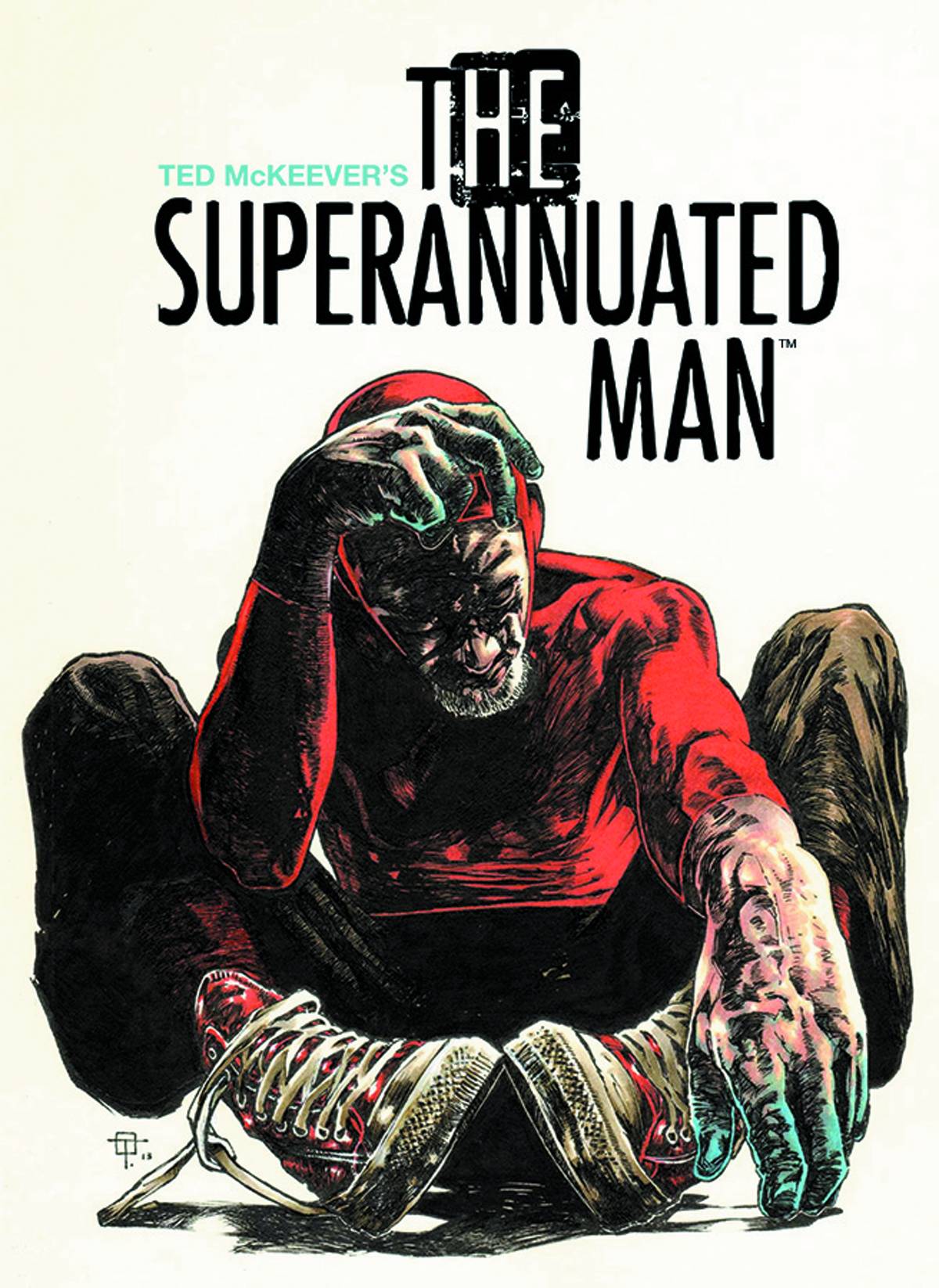 (A self portrait) I probably first became aware of McKeever with either his brilliant Eclipso two-parter or the daunting Extremist mini series with Peter Milligan. That was in 1993, and that triggered my first real back-issue hunting quest : I had to get everything I could from this artist!   Beautifully broken, his characters (humans, monsters, objects or places) always convey a sense of transformation, something is going on, nothing is stable, and cities are the greatest accelerator of those mutations! It really was love at first sight. I think that since that, I haven't missed a single published page from the man and saw him grow, question his own art, re-invent himself, find himself again, experiment with colors in diferent fashions, just a true cartoonist fond of experimentations above anything else. With his upcoming Pencil Head series, he seems to have now reach a point where his stories are gonna tackle the industry itself, after he lately pondered on his craft and his position within it ( Superannuated Man and META4)...   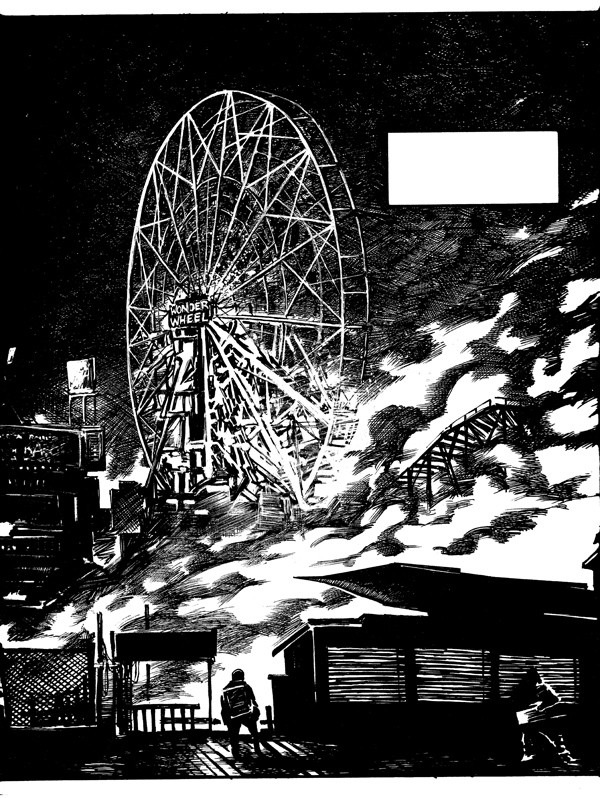  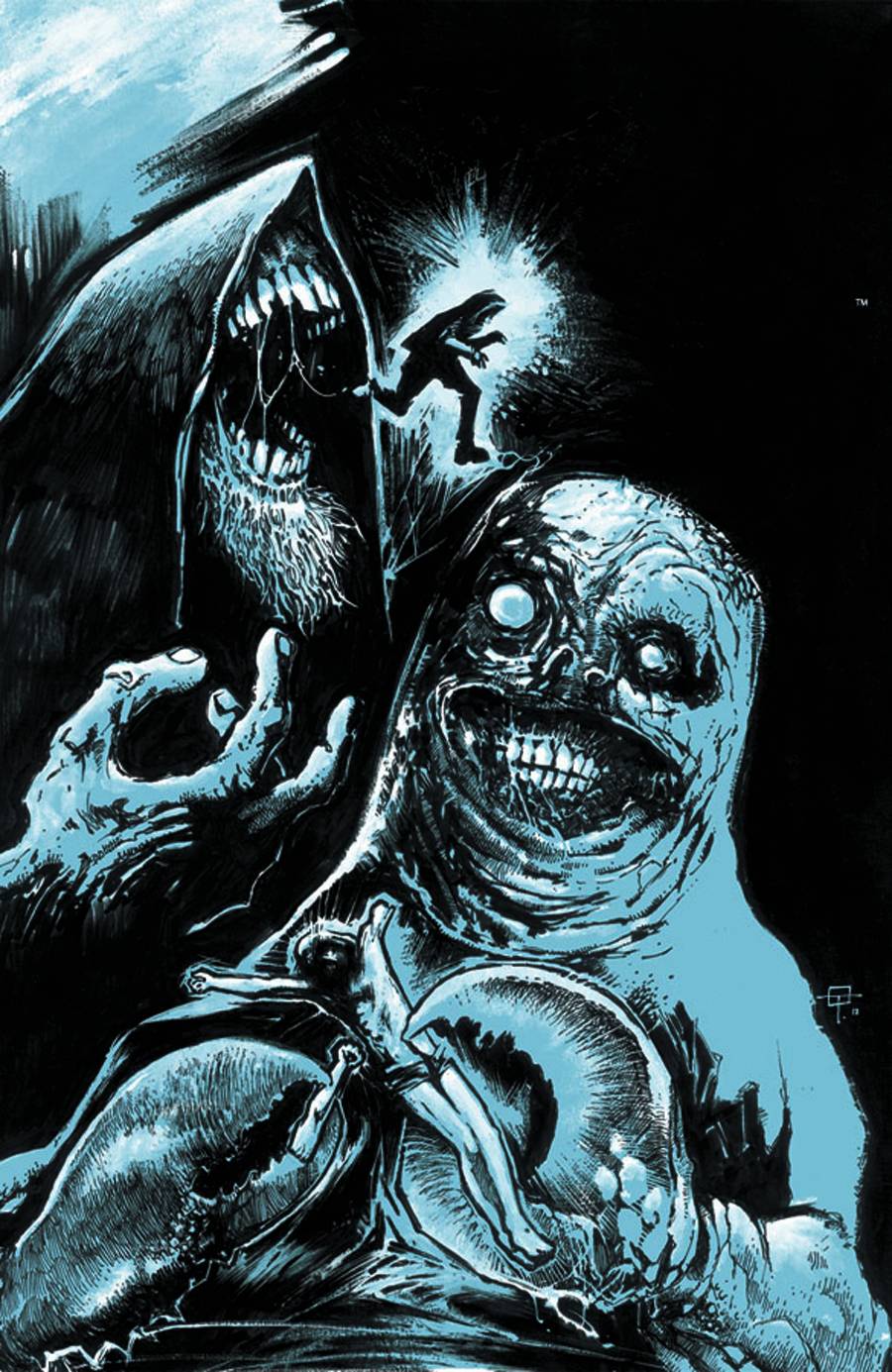 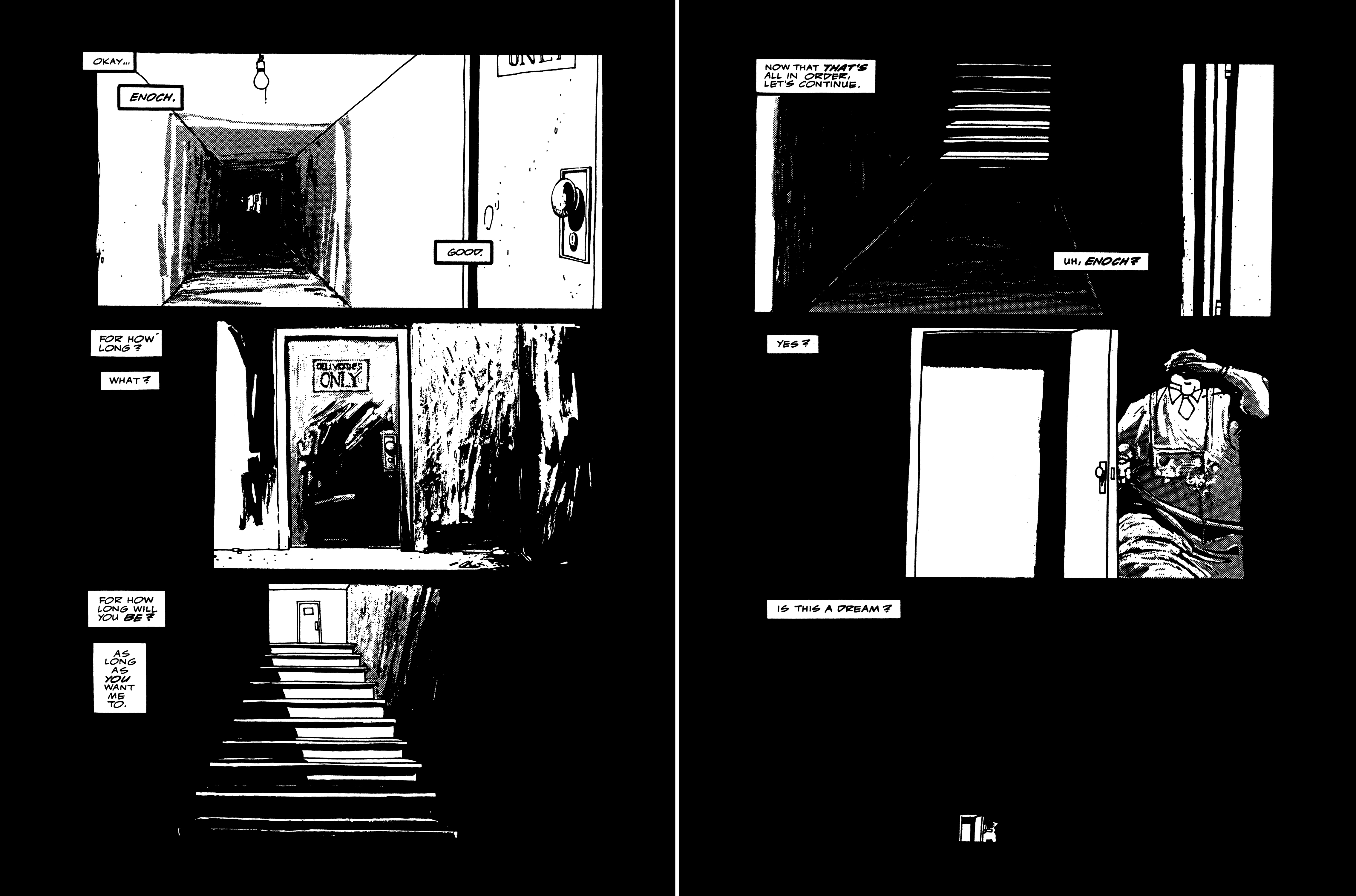   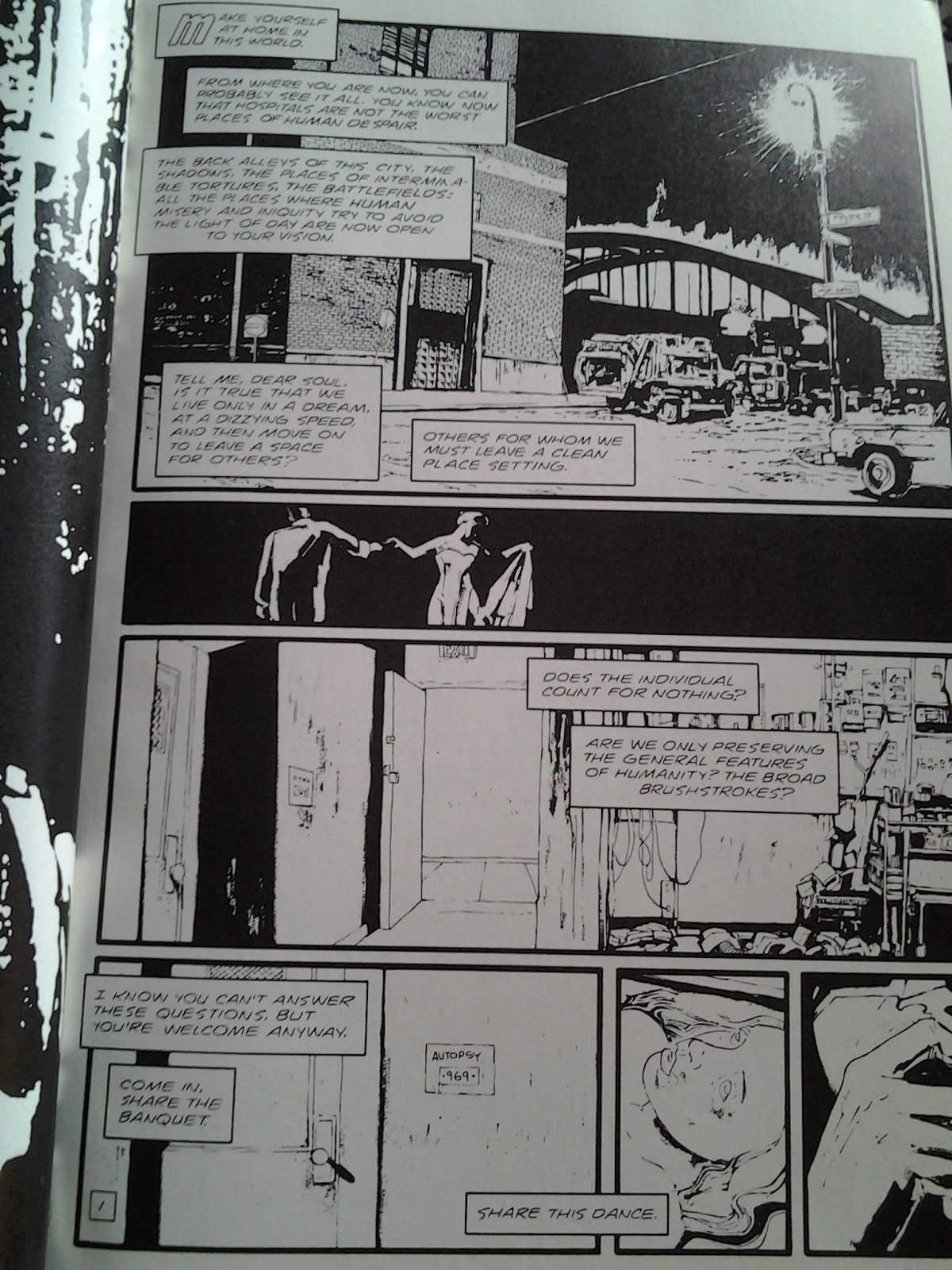 All together, he has published 17 graphic novels/mini-series (highlights being Transit, Eddy Current, Metropol, Plastic Forks, The Extremist, Faith, Industrial Gothic and all of his recent Image stuff), had a year-long Doom Patrol run, tackled most of the main superheroes ( Superman, Bats, WW, Wolverine, Spidey, Dr Strange, Iron Man, Howard The Duck(!)...) with superb results in his C reeper, Batman, Eclipso, Arès stories, and countless other short stories for Vertigo, Marvel, Image and plenty of 80ies indie publishers. When I think of 80ies comics incarnated, he pops up pretty high on the list.
|
|
|
|
Post by Deleted on Dec 15, 2015 13:38:10 GMT -5
On the third day of Christmas, comics my true love gave to me... Linda Medley for Castle Waiting, the Curse of Brambly Hedge and other stuff... Once upon a time...there really are no more powerful words in storytelling in the western world, and Medley captures the spirit of those words perfectly in her work. 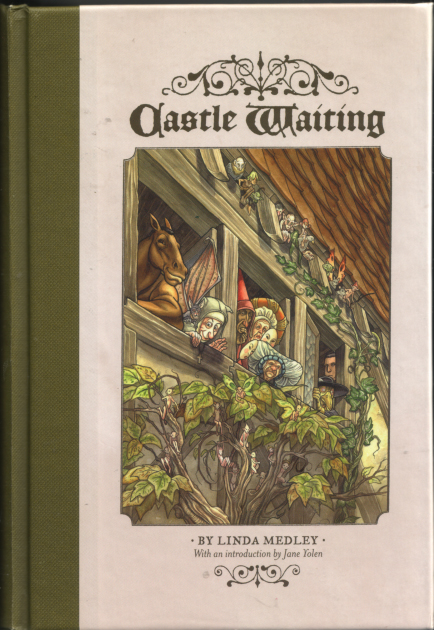 I first discovered Medley in my late 90s early 2000s period of comics exploration. It was a short leap from Gaiman and Vess to Medley (and Caslte Waiting had a preview in Vess' Book of Ballads and Sagas, and of course Veitch's Comic.com helped fuel the discovery as well. I have never seen the charm of Medley's work better articulated than by Jane Yolen in her intro to the Fantagraphic collection of CW-she describes Medley's cartooning as depicting her characters perfectly in character all the time whether they are just standing in the background of a panel or on center stage. The image of each character revelas so much about who each character is... 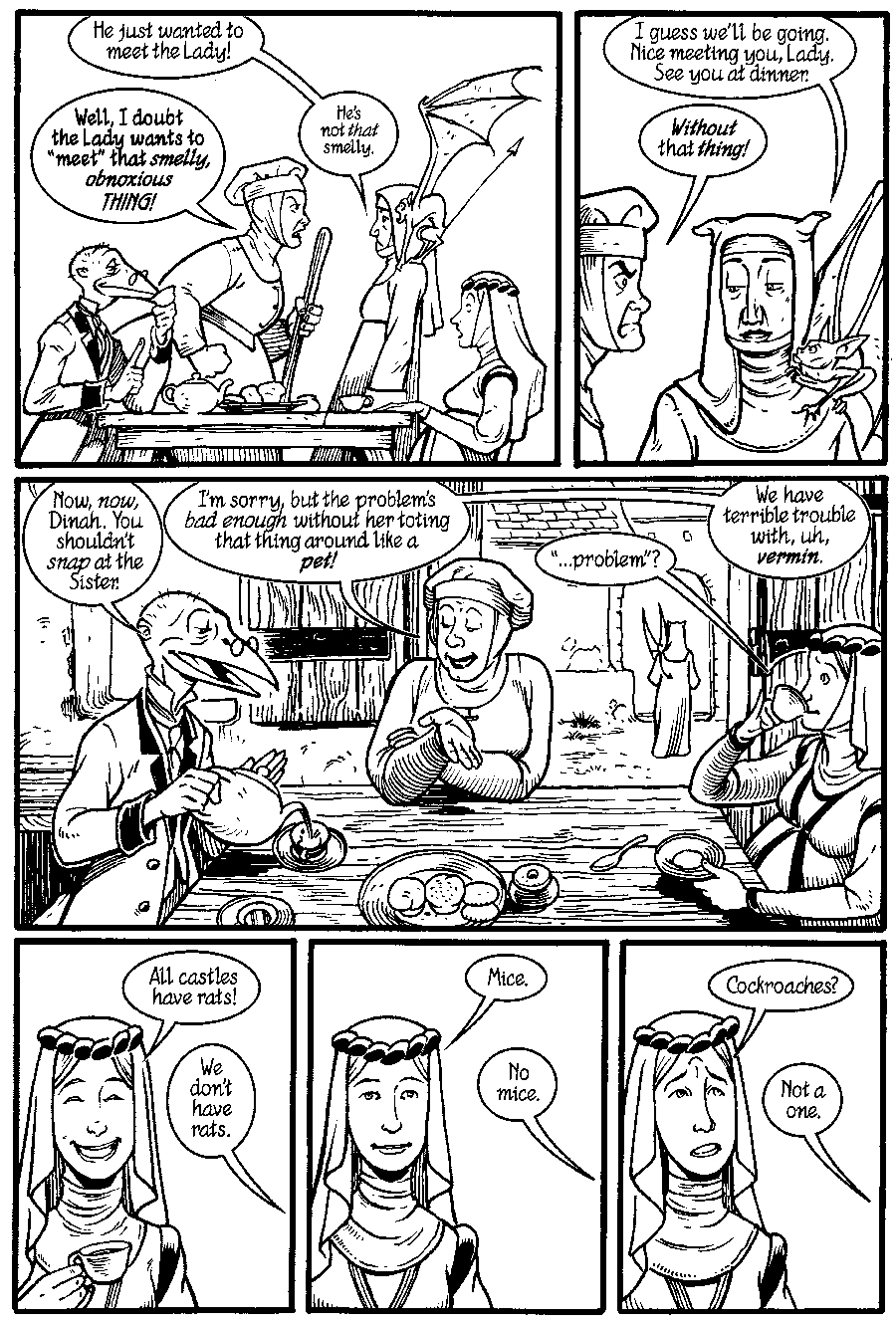 Rackham (or Beaky as Sir Chess likes ot call him) in every panel looks calm and unflappble, Sister Peace mischevious but kind, and that center panel-Lady Jain wide-eyed as she sips her tea next to the half-lidded and hand gesticulation of Dinah, the cook, and again Rackham calmly pouring the tea. SO much body language, so much character revealed in each and every panel. And her art, like her story telling is delightfully charming. More of her character revealing art-each face in the crowd is unique and each reveals something about the character...  no stock poses/expressions and interchangeable people out of costume here. More... 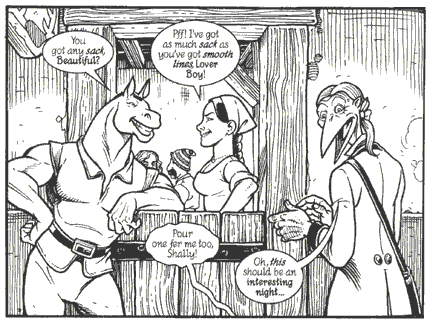 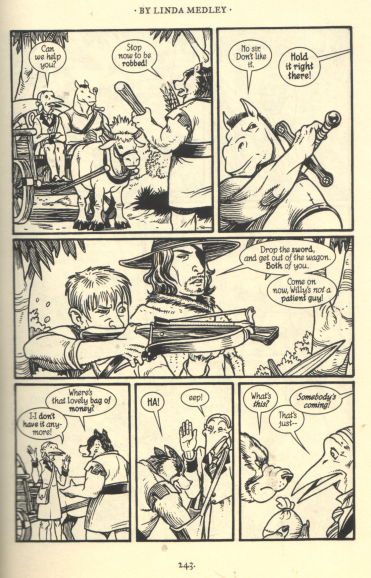 You won't find epic battles and cosmic struggles here, but you will find stories to enchant, characters to adore, and drama to engross you. -M |
|